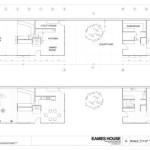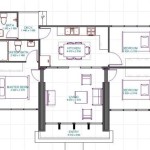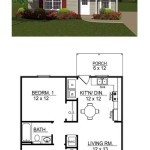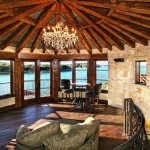Large Dog House DIY Plans: A Comprehensive Guide
Providing adequate shelter for large dog breeds necessitates a dog house built to withstand the elements and accommodate their size. Purchasing a pre-built dog house can be expensive, and often the quality does not meet the needs of discerning pet owners. Constructing a dog house independently allows for customization to suit individual dog needs, climate conditions, and aesthetic preferences. This article explores various large dog house DIY plans, outlining key considerations, construction techniques, and material choices to facilitate a successful building project.
Before embarking on any construction project, diligent planning is crucial. This includes assessing the dog's size and breed, considering the local climate, selecting appropriate materials, and developing a detailed blueprint. Neglecting these preliminary steps can lead to a poorly constructed dog house that fails to provide adequate protection or quickly deteriorates.
Key Considerations Before Construction
Several factors influence the design and construction of a large dog house. These include the size of the dog, the prevailing weather conditions, material selection, and the overall aesthetic desired. Each aspect contributes to the functionality and longevity of the final product.
Dog Size and Breed: Accurate measurements of the dog are essential. The dog house should be large enough to allow the dog to stand, turn around, and lie down comfortably. Consider the breed's typical sleeping posture and accommodate space for stretching. Breeds with thick fur may require less interior space compared to short-haired breeds, as they may prefer a more enclosed environment for warmth. The entrance opening should be wide and tall enough for the dog to enter and exit easily without crouching excessively.
Climate Conditions: The local climate dictates the insulation and ventilation requirements of the dog house. In colder climates, insulation is paramount to retain heat. This can be achieved through the use of insulated walls, floors, and roofs. A raised floor also minimizes heat loss to the ground. In warmer climates, ventilation is crucial to prevent overheating. Strategically placed vents, an overhanging roof to provide shade, and light-colored materials can help keep the dog house cool. Consider the prevailing wind direction when designing the entrance to minimize exposure to harsh weather.
Material Selection: The choice of materials greatly impacts the durability and longevity of the dog house. Pressure-treated lumber is a common choice for the frame due to its resistance to rot and insect infestation. Exterior plywood or siding can be used for the walls and roof. Roofing materials range from asphalt shingles to metal roofing, depending on budget and aesthetic preferences. Insulation materials can include rigid foam insulation, fiberglass batting, or recycled denim insulation. Consider the use of non-toxic paints and sealants to ensure the dog's safety. Cedarwood is a naturally insect-repellent and rot-resistant option, although it can be more expensive.
Aesthetic Preferences: While functionality should be the primary concern, the dog house can also be designed to complement the existing architecture of the home and garden. Consider the shape, color, and style of the dog house to create a cohesive look. Plans can range from simple, utilitarian designs to more elaborate structures with architectural details. However, it is important to prioritize the dog’s comfort and safety over purely aesthetic considerations.
DIY Dog House Plans: Construction Techniques
Several construction methods can be employed when building a large dog house. The chosen method will depend on the complexity of the design, the available tools and skills, and the budget. Two common approaches are detailed below, focusing on a basic A-frame design and a more elaborate insulated design.
Basic A-Frame Dog House: This design is relatively simple to construct and requires basic carpentry skills. The A-frame structure provides structural stability and naturally sheds water. To begin, construct the base frame using pressure-treated lumber. This frame will serve as the foundation of the dog house. Next, cut the plywood or siding panels to the desired dimensions for the sides and roof. Secure the panels to the frame using screws or nails. Ensure that all joints are properly sealed to prevent water leakage. Cut an opening for the entrance and reinforce the edges to prevent splintering. Finally, apply a coat of exterior paint or sealant to protect the wood from the elements.
Insulated Dog House: This design is more complex but provides superior protection from extreme temperatures. Start by constructing a frame using pressure-treated lumber, similar to the A-frame design, but with wider spacing between the studs to accommodate insulation. Install the exterior plywood or siding panels. Then, cut and install the insulation material between the studs. Use rigid foam insulation for optimal thermal performance. Cover the insulation with an interior layer of plywood or paneling. This creates a sandwich effect, with the insulation sandwiched between the exterior and interior layers. Construct a separate insulated floor and roof using the same technique. Ensure that all joints are properly sealed and that the insulation is properly contained to prevent moisture intrusion. The entrance can be modified to include a flap or door to further reduce drafts. Consider adding a small window for natural light and ventilation, ensuring it is properly sealed and covered with wire mesh for safety.
Foundation and Elevation: Regardless of the chosen design, elevating the dog house off the ground is crucial. This prevents moisture from seeping into the floor and provides better ventilation. The dog house can be elevated using concrete blocks, pressure-treated skids, or a raised platform. Ensure that the foundation is level and stable to prevent the dog house from tipping or shifting over time. A slight slope on the ground away from the dog house can help with drainage.
Material Choices and Considerations
Selecting the right materials is essential for building a durable and long-lasting dog house. This involves understanding the properties of different materials and their suitability for specific applications. Budget constraints and aesthetic preferences also play a role in the selection process.
Lumber: Pressure-treated lumber is the preferred choice for the frame due to its resistance to rot, decay, and insect infestation. Untreated lumber will quickly deteriorate when exposed to the elements. Cedarwood is another excellent option, offering natural rot and insect resistance, but it is typically more expensive. The size and type of lumber will depend on the size and design of the dog house. Use thicker lumber for larger dog houses to ensure adequate structural support.
Plywood and Siding: Exterior-grade plywood is a common choice for the walls and roof due to its affordability and ease of use. However, it is important to seal the edges properly to prevent water damage. Siding options include cedar siding, vinyl siding, and composite siding. Cedar siding offers a natural look and excellent weather resistance. Vinyl siding is low-maintenance and durable. Composite siding is a more expensive option that combines the benefits of wood and plastic.
Roofing Materials: Asphalt shingles are a popular and affordable roofing option. They are relatively easy to install and provide good protection from the elements. Metal roofing is more durable and long-lasting but can be more expensive. Consider the pitch of the roof when selecting roofing materials. A steeper pitch will allow for better water runoff. Ensure that the roofing materials are properly installed to prevent leaks.
Insulation: Rigid foam insulation provides excellent thermal performance and is relatively easy to install. Fiberglass batting is a more affordable option but may not be as effective at insulating. Recycled denim insulation is an eco-friendly option that provides good insulation and sound dampening. Ensure that the insulation is properly contained to prevent moisture intrusion and to protect the dog from ingesting it. Weather stripping around the entrance can further improve insulation and reduce drafts.
Fasteners: Use galvanized or stainless steel screws and nails to prevent rust and corrosion. Choose the appropriate length and type of fastener for the specific application. Ensure that the fasteners are properly driven to avoid splitting the wood. Pre-drilling pilot holes can help prevent splitting, especially when working with hardwoods.
Finishes and Sealants: Use non-toxic paints and sealants to ensure the dog's safety. Choose exterior-grade paints and sealants that are designed to withstand the elements. Apply multiple coats for maximum protection. Consider using a stain to enhance the natural beauty of the wood. Ensure that the finishes are fully cured before allowing the dog to use the dog house.
By carefully considering these factors and following detailed construction plans, it is possible to build a durable, comfortable, and aesthetically pleasing dog house for large breeds. The investment of time and effort will ultimately result in a custom-built shelter that meets the specific needs of the dog and provides years of reliable service.

14 Diy Dog Houses How To Build A House Plans Blueprints

Large Dog House Plans Free Construct101

Dog House Plans Free Diy Projects Construct101 Wooden

Simple Diy Dog House Plans In 2024 Easy

Large Dog House Plans Howtospecialist How To Build Step By Diy

Large Dog House Plans Myoutdoorplans

Diy Dog House Plans Double Kennel Large Outdoor Finland

Large Dog House With Porch Plans Free Garden How To Build Projects

How To Build A Custom Insulated Dog House Ron Hazelton

Large Dog House Plans Construct101








